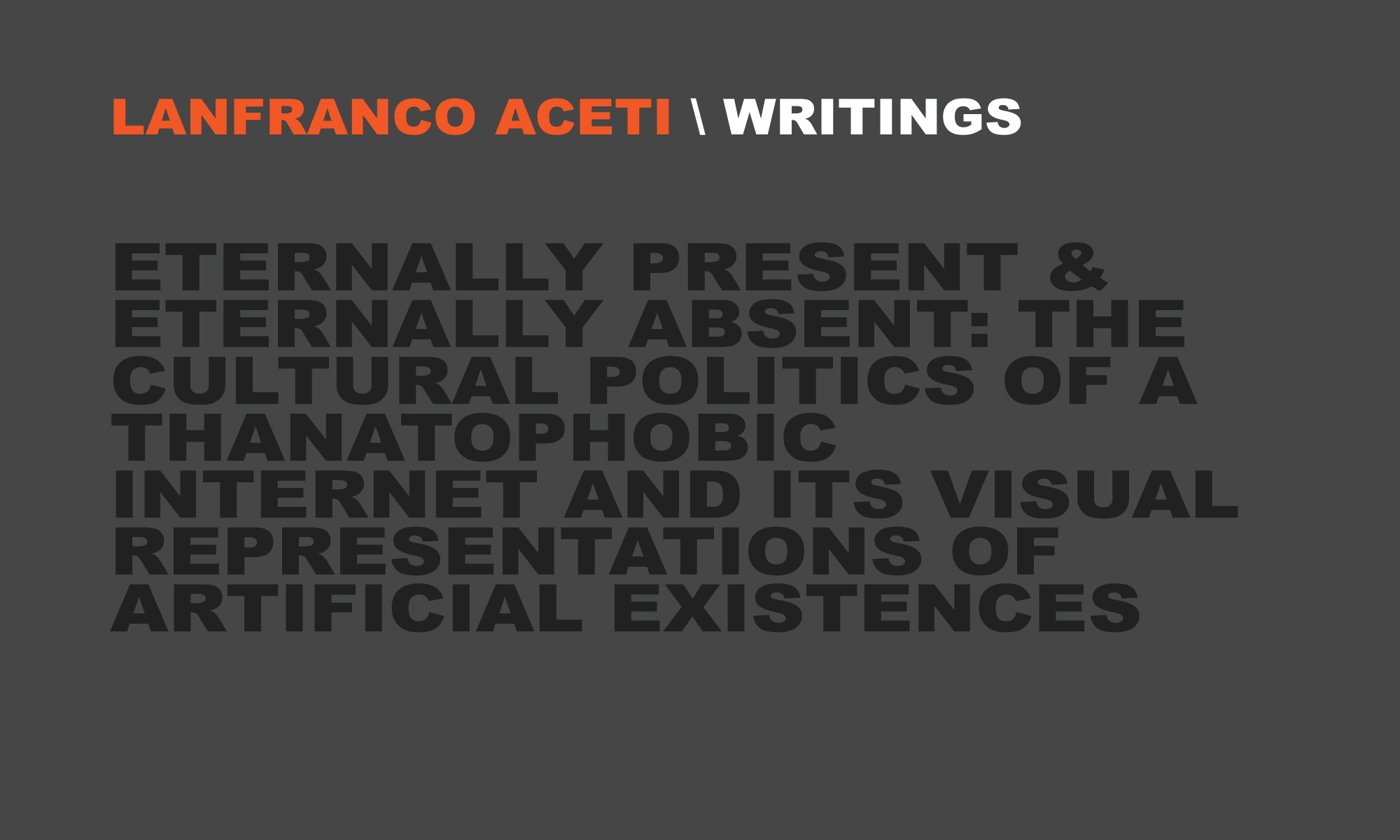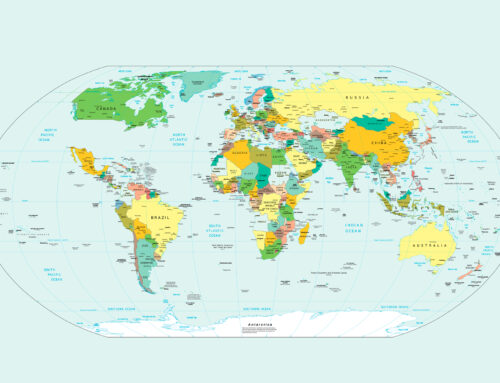ETERNALLY PRESENT & ETERNALLY ABSENT: THE CULTURAL POLITICS OF A THANATOPHOBIC INTERNET AND ITS VISUAL REPRESENTATIONS OF ARTIFICIAL EXISTENCES
ABSTRACT
Perhaps nothing is more representative of a thanatophobic society than the process of accumulating and storing virtual data in online environments. This process of accumulation and storage of data has become a behavioral and daily activity for many – manifested through a series of different platforms such as FaceBook, Twitter, Flickr, Vimeo, YouTube, LinkedIn, Instagram, Academia.edu, Skype and Delicious – and is no longer solely a reflection of personal engagements but also of phenomena of post-identity in a post-postmodern society.
The relationships between the user, the data uploaded and the cultural politics of the Internet have created a framework within which personal information, images and surfing behaviors are existential data themselves: a precession of simulacra in Baudrillardian terms. These data are framed within a context of eternal presence/confirmation of existence and memorialization of absence and loss. They are uploaded from the users as a confirmation of presence and existence and commercialized by companies and individuals through the economic exploitation of crowdsourcing in the larger context of globalized post-capitalistic societies.
The paper will address the cultural and political contexts within which the process of data/self uploading generates phenomena of existence beyond death (eternalization) by making it, increasingly so, nearly impossible to delete one’s online existence. The data uploaded also acts as a constant reminder of the absence that is re-played – through photographic, video and digital tools – over and over again as a phenomenon of re-mort and re-morse.
In Bazin’s seminal essay Death Every Afternoon the cinematic repetition – which he identified with the re-calling of the image – is both a process of eternalization of the death event in the moment as it happens as well as an externalization of the process that leads to the absence of death.
In the post-Internet era online data constantly replayed have acquired the function of eternalizing both presence and absence by inducing a collapse of the ‘moment par excellence’: the instant of death. By constantly digitizing and uploading data/lives, ‘digital humanity’ finds and confirms its existence as an eternal illusion. This is in an ontological opposition to the argument of reality and negates the “qualitative instant in its purest form.” [2]
The process of eternalizing is embedded in a still developing digital cultural framework that is a constant virtual presence across time and space. It is this digital cultural framework that, by providing the illusion of cheating death and living in the real moment, enslaves the reality of existence in a post-Internet context framed by the politics of post-postmodern controls and economic exploitation of life and death.
[1] André Bazin, “Death Every Afternoon,” in Rites of Realism: Essays on Corporeal Cinema, ed. Ivone Margulies (Durham and London: Duke University Press, 2003).[2] Ibid., 30.KEYWORDS
Presence, post-Internet, absence, death, thanatophobia, digital data, film, web 2.0, memorialization, digital humanity, eternalization






